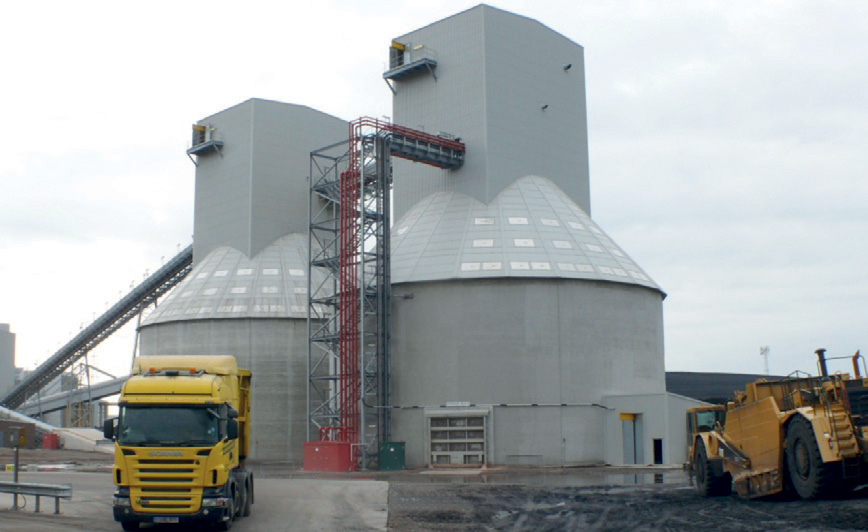

|
Edward Lowton
Editor |


|
| Home> | Plant, Process & Control | >Process equipment | >Measures biomass levels |
ARTICLE
Measures biomass levels
04 March 2013
A biomass co-firing facility enables Drax Power Station in North Yorkshire to receive, handle, store and process a variety of biomass materials that are directly injected into coal-fired boilers where they are burnt alongside coal.

A biomass co-firing facility
enables Drax Power Station
in North Yorkshire to receive,
handle, store and process a
variety of biomass materials
that are directly injected into
coal-fired boilers where they
are burnt alongside coal.
Biomass feedstock products vary from forestry residues, or cultivated products such as Miscanthus and Willow, to agricultural by-products like straw. Stock rotation/retention time needs careful management as the products need regular rotation to avoid degradation.
Even with large silo sizes, the biomass typically only has a retention time of 24- 48h, before being sent to electricity production.
A key area of this fuel stock management is level measurement. A non-contact technology is preferred on site to mitigate the potential for fouling and wear.
Silos are frequently fed into and discharged from, giving an uneven product surface and the need for long range measurement. VEGA installed non-contact Vegapuls 68 level radars for solids, working over a range of about 27m. Two units are installed on each of the large silos, to give an average reading, as well as for dual redundancy level measurement of the biomass material. They are mounted towards the centre of the silo, aimed down and slightly outwards, measuring at a point about half the radius, to deliver a good average level reading over the surface profile. Units work reliably, regardless of the filling stream. There are no crosstalk issues, even with multiple units in the same silo.
Biomass feedstock products vary from forestry residues, or cultivated products such as Miscanthus and Willow, to agricultural by-products like straw. Stock rotation/retention time needs careful management as the products need regular rotation to avoid degradation.
Even with large silo sizes, the biomass typically only has a retention time of 24- 48h, before being sent to electricity production.
A key area of this fuel stock management is level measurement. A non-contact technology is preferred on site to mitigate the potential for fouling and wear.
Silos are frequently fed into and discharged from, giving an uneven product surface and the need for long range measurement. VEGA installed non-contact Vegapuls 68 level radars for solids, working over a range of about 27m. Two units are installed on each of the large silos, to give an average reading, as well as for dual redundancy level measurement of the biomass material. They are mounted towards the centre of the silo, aimed down and slightly outwards, measuring at a point about half the radius, to deliver a good average level reading over the surface profile. Units work reliably, regardless of the filling stream. There are no crosstalk issues, even with multiple units in the same silo.
MORE FROM THIS COMPANY
OTHER ARTICLES IN THIS SECTION

















